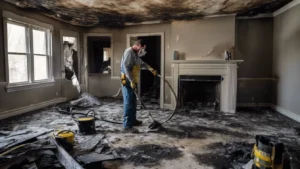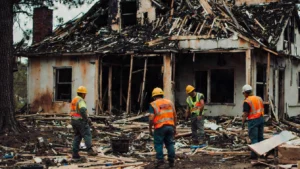Asbestos is the primary cause of mesothelioma. Inhaled asbestos fibers become lodged in the lining of the lungs, triggering an immune response that causes inflammation and scarring. Mesothelioma develops as a result of continued tissue and DNA damage after decades of asbestos exposure.

When asbestos fibers travel to different parts of the body, it results in different types of mesothelioma.
For example, pleural mesothelioma is caused when fibers get stuck in the pleura, which is the lining of the lungs. The peritoneal type is caused when fibers are deposited in the peritoneum, which is the lining of the abdominal cavity.
Mesothelioma was virtually unknown until the 20th century. Mesothelioma incidence rates rose as industries expanded the use of asbestos.
Primary Risk Factors
The majority of people who get malignant mesothelioma cancer were exposed to asbestos while working certain blue-collar jobs or serving in the military. About 80% of people diagnosed with mesothelioma have been exposed to asbestos.
Risk Factors for Mesothelioma
- Working at an asbestos mine or asbestos-processing plant
- Working in a high-risk occupation such as construction or heavy industry
- Serving on military ships or facilities built with products containing asbestos
- Living in a residential area near an asbestos mine or contaminated site
- Disturbing asbestos products during a home renovation without proper safety measures
Smoking, on its own, does not increase the risk of developing mesothelioma; however, in combination with asbestos exposure, it can increase the risk of other types of lung cancer.
While age, gender and overall health do not affect the risk of developing mesothelioma, these factors can affect overall prognosis and survivability after a mesothelioma diagnosis.
Where Does Asbestos Exposure Occur?
Asbestos exposure primarily happens in a workplace setting. It can also happen at home and in the natural environment.
Asbestos was widely used in thousands of commercial, industrial and domestic products. Examples include drywall, insulation, piping, glues and adhesives, ceiling tiles, cement and shingles.
Workers who manufactured or used these products were exposed to asbestos on the job. Others, including workers’ family members, faced secondary exposure at home. Environmental exposure happened in communities that mined or processed asbestos.
Past Occupational Exposure
The risk for asbestos-related illnesses is highest for people who worked with the raw mineral or with asbestos-containing products on a daily basis.
High-Risk Occupations
- Shipyard workers
- Construction workers
- Power Plant workers
- Chemical Plant workers
- Industrial workers
- Insulators
- Boiler workers
- Auto mechanics
Risk Factors in Present-Day Jobs
Construction tradesmen and firefighters can be exposed to asbestos while working in old homes and structures built with contaminated materials. Exposure can happen during a renovation, demolition or disaster response.
When old buildings are destroyed without safety precautions, airborne asbestos fibers can contaminate the surrounding area. Even new buildings contain asbestos products such as roofing materials.
Firefighters, contractors, demolition workers, electricians and plumbers are at high risk of exposure to asbestos in old buildings.
Secondhand Exposure
When the asbestos industry was booming, families of workers were also at great risk. Workers often came home with asbestos fibers on their hair, work clothes, shoes and tools. This exposed family members to the toxic substance and increased their risk for mesothelioma and related diseases.
Environmental Exposure
Because asbestos is a naturally occurring mineral, people living near large deposits in hilly or mountainous regions also face exposure. Minimal amounts of the mineral can fill the air in these regions. Still, environmental exposure is most dangerous near former asbestos mines.
Preventing and Detecting Mesothelioma
The best way to prevent mesothelioma is to follow workplace safety regulations and protect yourself by learning more about how you might be exposed to asbestos at work and at home. Be cautious of materials in old homes that may contain asbestos.
If you think a past job or home repair project exposed you to asbestos, you should seek regular medical exams to check for signs of asbestos-related diseases.
If you or a loved one has a history of asbestos exposure — especially in the workplace — don’t wait for symptoms to arise. Instead, be proactive and talk to your doctor. Early detection offers the best opportunity for effective mesothelioma treatment.








